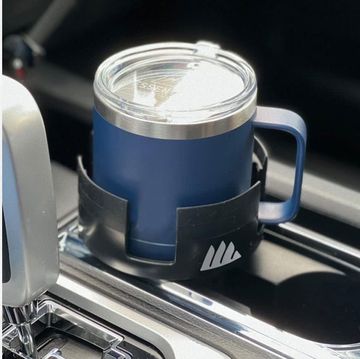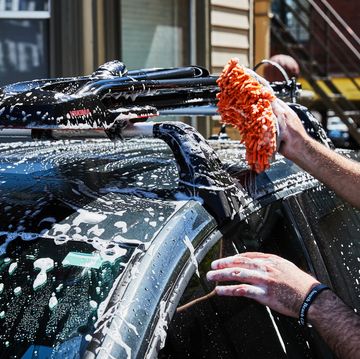Car-window tinting will keep you cooler in summer, protect your car's interior, and add value when you're ready to sell it. With some dealers charging up to $500 just for labor, a DIY car tint will keep that money in your pocket.
What You'll Need
You can find window-tint film at places like Window Film Supplies. You'll also need a window-tint-film application solution, a lint-free cleaning cloth, a razor knife, a scraper blade, an application squeegee, and a heat gun. Find a dust-free place to work in (such as a garage) and avoid doing the job in excessive heat or cold or on a day with high humidity. And most important, check state laws online to find out which windows can legally be tinted and how dark you can make them.
Preparation
Apply the application solution to the inside of the window. Don't over-spray onto the door trims.
Run the scraper blade across the window from side to side, starting from the top and gently working your way down the window. This will remove any dust, grime and debris. Be careful not to gouge the glass with the blade.
Run the squeegee across the window from side to side, starting from the top and working down the window to remove any leftover debris and solution.
Application
Put the application solution on the outside of the window and roll the tint film over the window with the protective-film layer facing upward. The solution will hold the film in place while you cut it to size, but will allow you to maneuver the film to make a precise cut.
Run the squeegee over the tint to make sure it doesn't move.
For sliding windows, roll the window down from the door frame about a quarter of an inch and cut the top and sides of the film to shape, using the window as a template. Round the edges off using your finger as a guide.
Slide the film up about half an inch before cutting along the bottom of the window, using the window gasket as a template. This will ensure coverage beyond the base of the window. For non-sliding windows, use the window gaskets as a template and cut the film right to the edges. Spray the inside of the window with the application solution.
Fix the film to the corner of the window with a piece of clear tape and start to peel the protective liner from the film. Spay the adhesive surface of the film with application solution as you peel. Discard the protective liner and remove the film from the outside of the window and place it on the inside of the window. Fold the bottom edge back onto itself to avoid it touching the door trim.
Move the tint into place at the top of the window, leaving a 1/8-inch gap from the top of any sliding window. Run the squeegee along the top of the window, pushing any air and water out of the top as you go.
Roll up the window and spray the film again with application solution. Use the squeegee to hold the window gasket out while sliding the film in underneath it. Use the squeegee to push all the air and water out from beneath the film.
Wrap the squeegee in a lint-free cloth and run it across the entire window. The cloth will absorb any remaining application solution. Use the cloth to wipe down door trims and paint. If any bubbles or fingers of trapped air or application solution remain in the film, use a heat gun to gently warm the area and then run the squeegee over the bubbles toward the closest edge of the window. Repeat this process for all windows until the job is complete.
For the cost of a few basic tools and materials, a DIY car tint is a worthwhile project. You'll save plenty of money and have a better insulated car.













